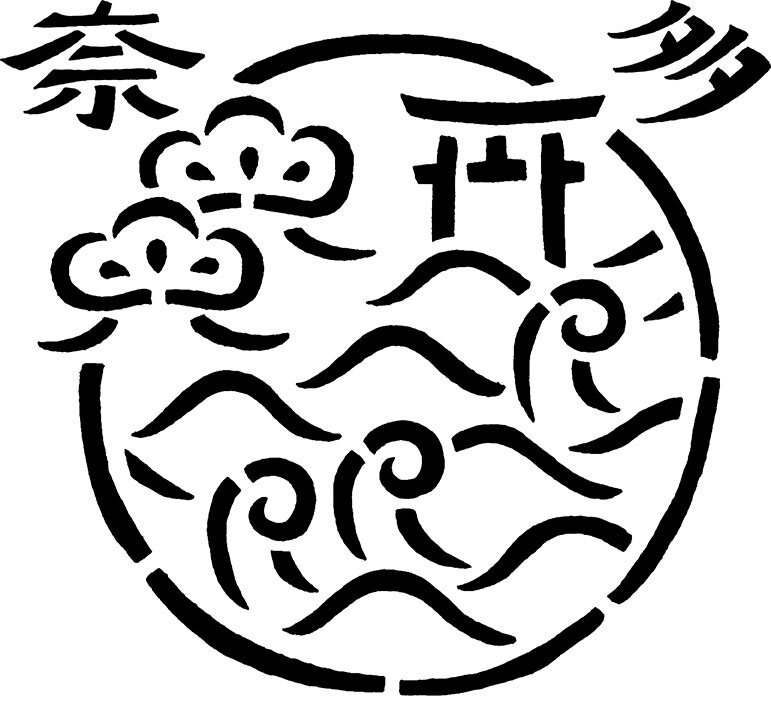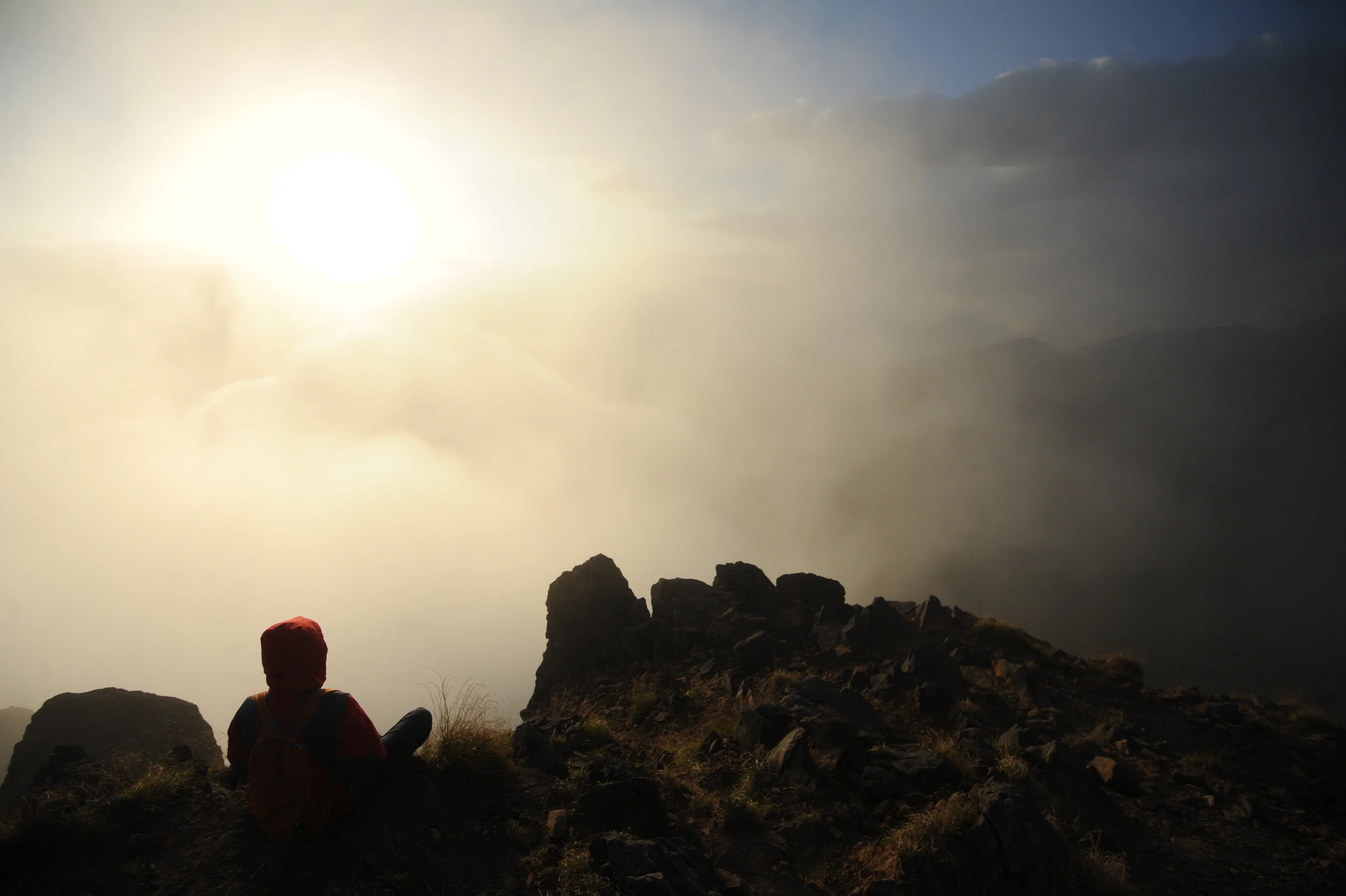
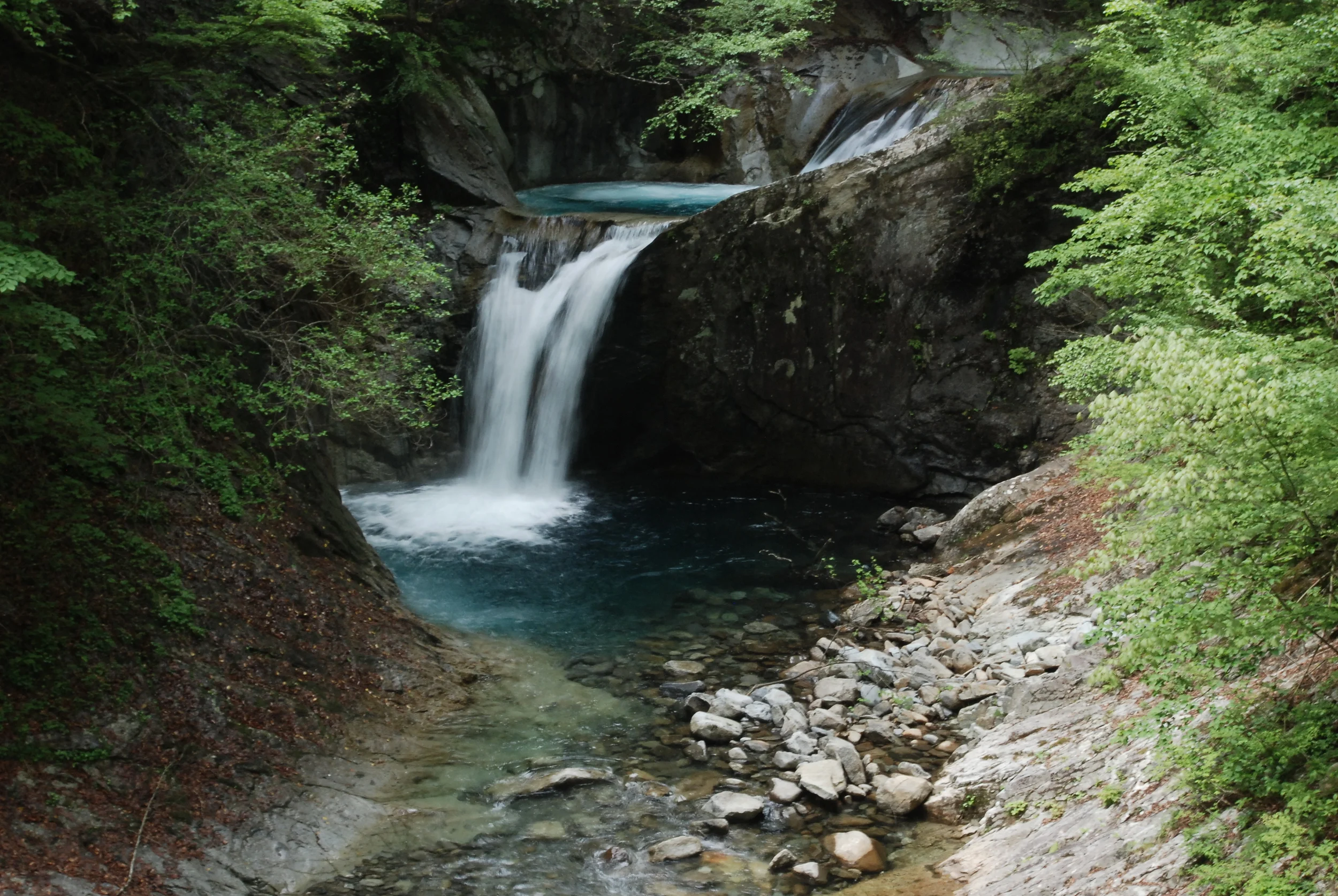
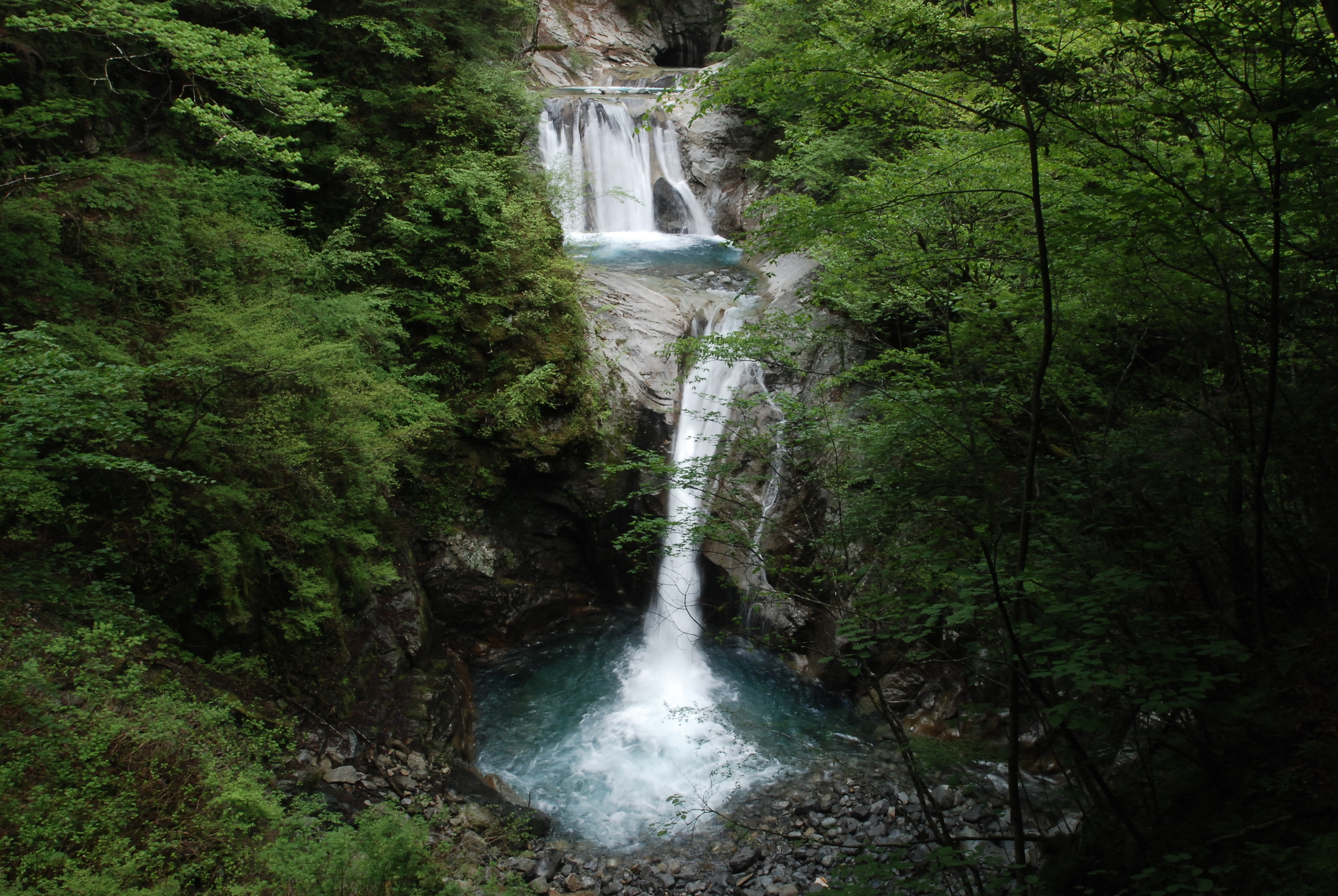
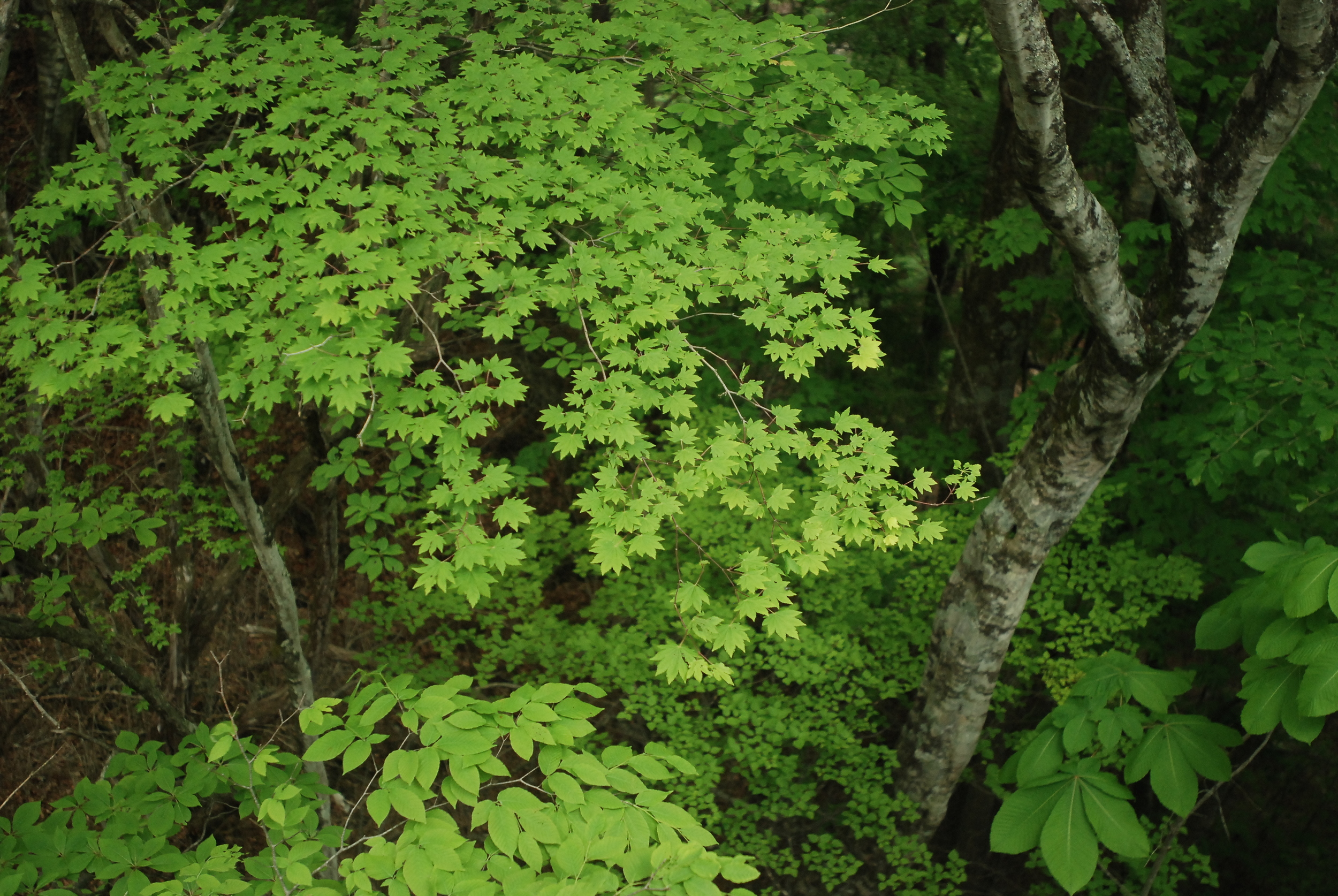
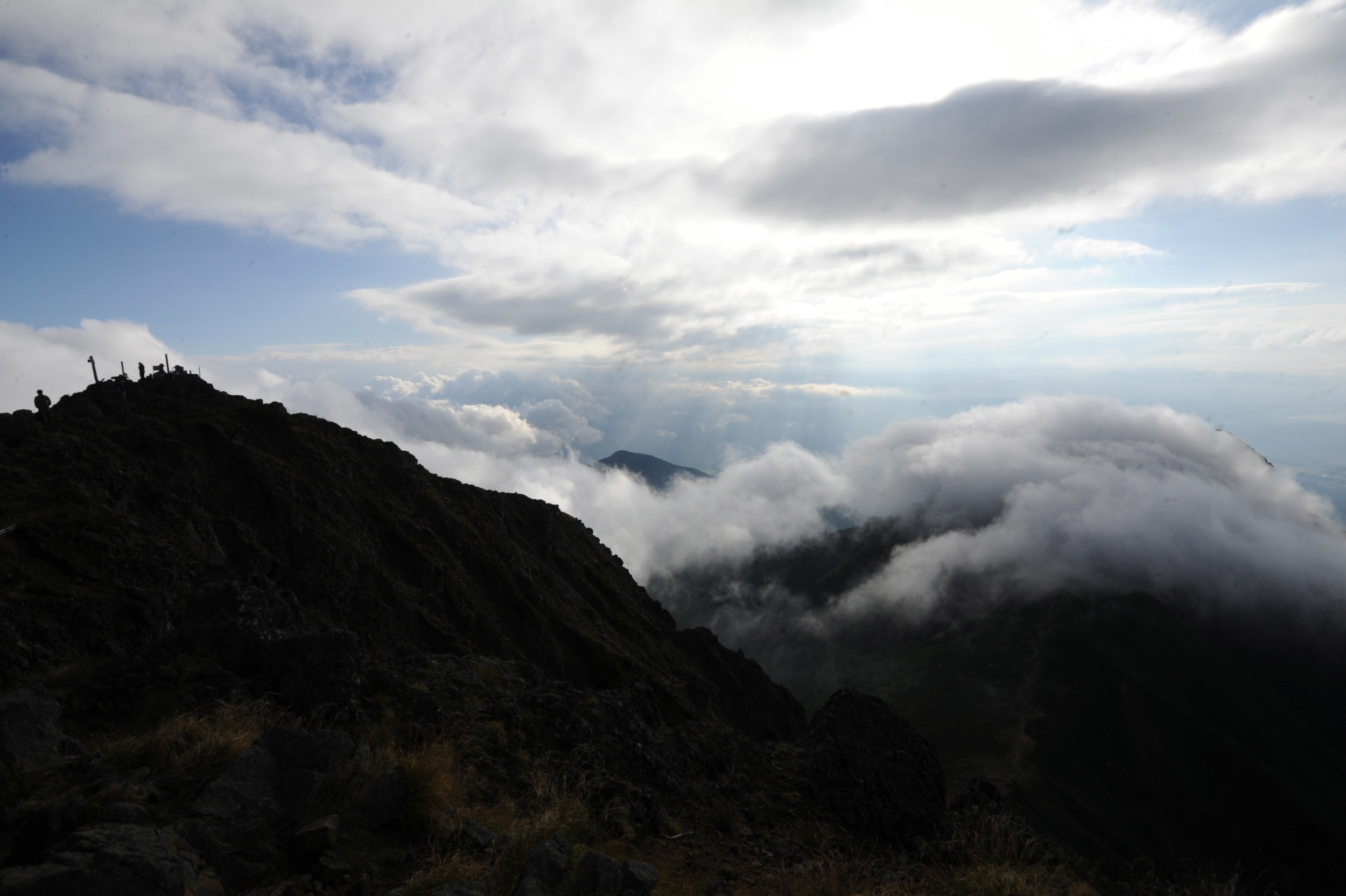

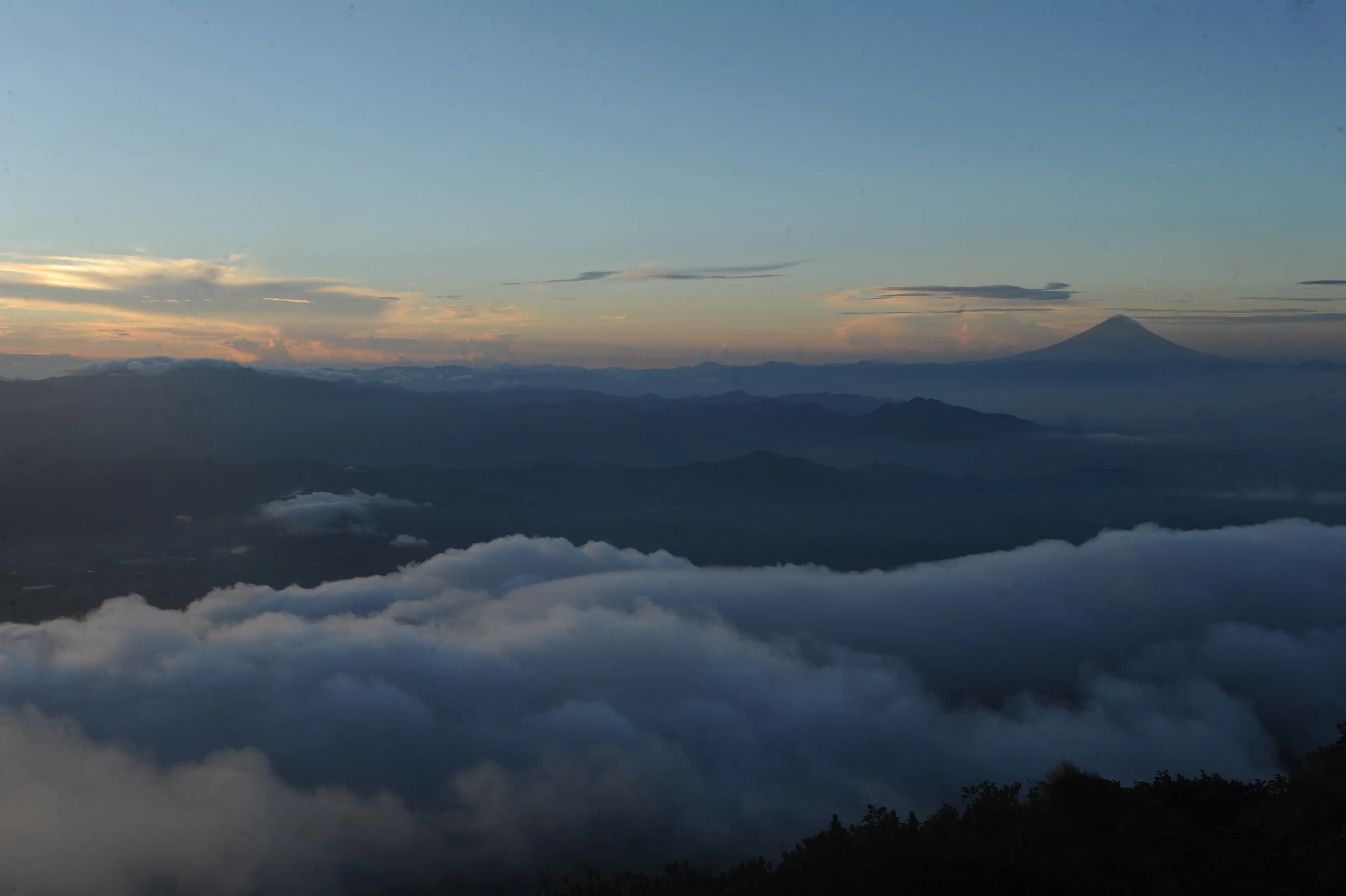
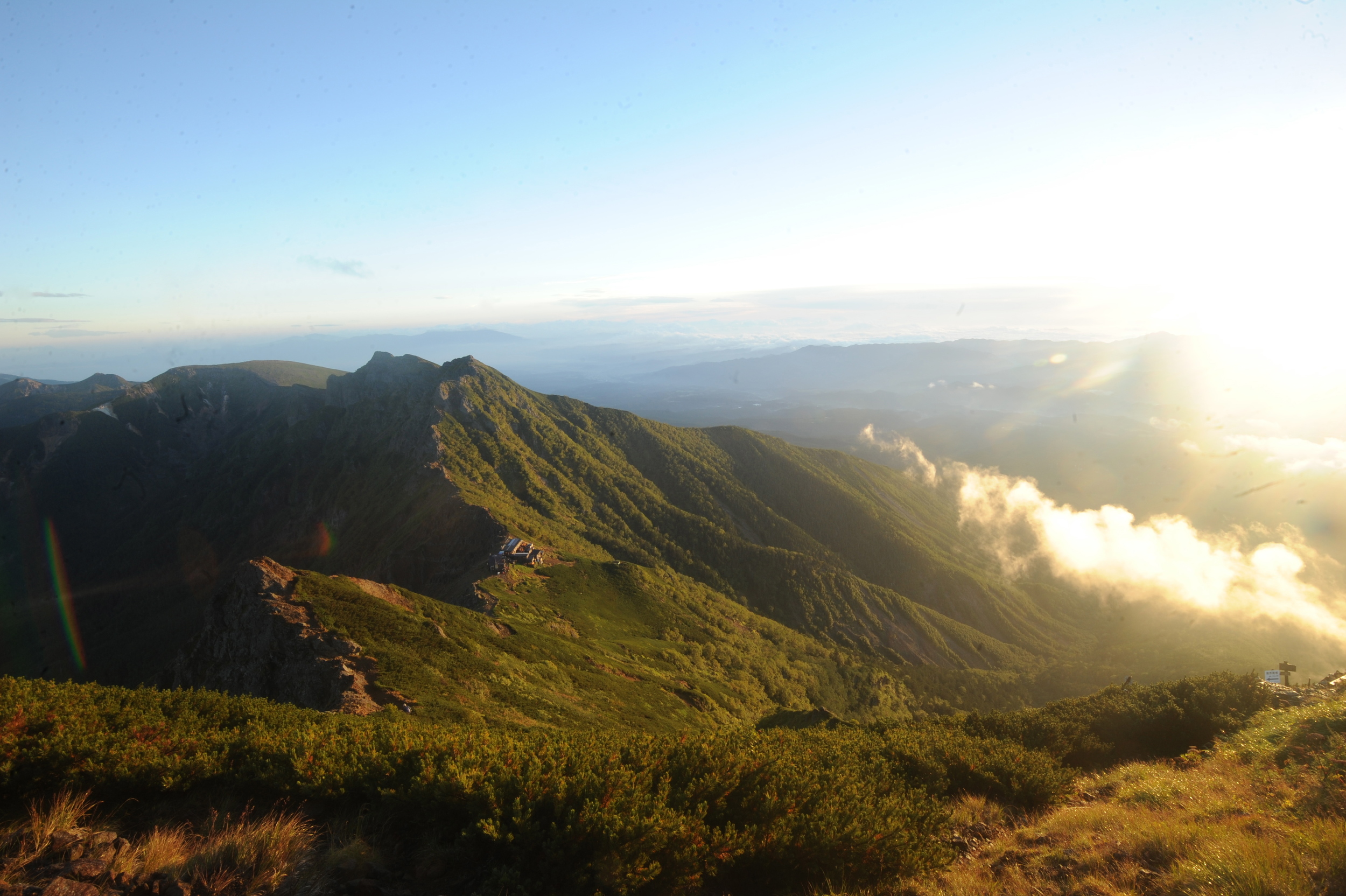
Hiking the highlands of majestic Japan
Photos and story by Tetsuo Nakahara - Published on Stripes Japan
As you near the summit the breeze caresses your face and the air gets clearer with every step. Finally, you reach the peak. Taking a deep breath, you eye the conquered mountainside and panoramic view of natural beauty.
You are on top of the world.
Hiking is one of Japan’s most popular pastimes. It’s especially true in the past five years or so for the younger generation. There’s even a trend of so-called “yama girls,” or mountain girls; 20- to 40-something-year-olds known for their colorful brand-name climbing outfits and penchants for outdoor fashion and physical exercise. They add to an army of hiking enthusiasts of all ages here.
As everyone knows, the most popular mountain to climb in Japan is Mount Fuji, the nation’s highest peak at 12,389 feet. Thousands of hikers, locals and tourists alike, look forward to climbing this United Nations-certified World Heritage site every year. About 319,000 people climbed it in 2012 alone – more than three times as many than in 2005 – according to Japan’s environment ministry.
This year, Mount Fuji is open to hikers from early July to mid-September via Yamanashi and Shizuoka prefectures. Keep in mind that climbing Fuji is so popular that it can be very crowded on weekends. So weekdays are best if you can swing it. The most popular starting point is the Yoshida-guchi entrance. It’s about 10-hour hike to the top and back.
“To climb Mount Fuji safely, it’s very important to check the weather forecast before going,” said Yoshio Ogata, executive director in Japan Mountaineering Association. “When you climb Mount Fuji, you can drive up to 7,562 feet via Yoshida-guchi and then start climbing the rest of the way. Be aware that the temperature can drop 43 as much as degrees Fahrenheit every 3,280 feet depending on the weather. It’s always good to be prepared.”
Mount Fuji, however, is not only a mountain to climb in Japan. In fact, about 70 percent of the country’s landmass is mountainous. There are so many ideal mountains to hike, from casual climbs to serious mountaineering, Ogata said, that you can plan excursions according any level of experience.\
“With four distinct seasons, Japan has very unique mountains,” he said. “Surrounded by ocean, Japan gets westerly winds which make a good amount of snow in the winter. Even though our mountain altitudes are not very high, they offer spectacular scenes throughout the seasons. Over all, the best season to enjoy mountaineering here is after the rainy season around July 20 to the middle August because typhoons will start to come after that.”
One of the most well-known mountainous regions for hiking here is the Japan Alps, or Nihon Alps, which are composed of three ranges: The Central, or Chuou, Alps in Nagano Prefecture;), the North, or Kita, Alps which cover Toyama, Gifu, Nagano and Niigata preftures; and the South, or Minami, Alps in Nagano, Yamanashi and Shizuoka prefectures.
Popular mountains for hiking in this region include mounts Tateyama, Kamikochi and Komagane, which attract local as well as international hikers and climbers. One well-known tourist attraction is the historic town of Hida Takayama and Shirakawago Village, which are relatively near Mount Kamikochi. This area is a perfect place to visit a traditional Japanese mountain village and hike some beautiful nearby mountain ridges.
The origins of mountain hiking in Japan are rooted in religious pilgrimages. Many of the mountains here were considered sacred and were worshipped by locals for thousands of years. Mounts Fuji, Hakusan in Ishikawa and Tateyama in Toyama are Japan’s three most well-known scared mountains, and they are all great mountains for hiking and mountaineering, according to Ogata.
“A long time ago when Japanese wanted to enter scared mountains, they would stay at lodges called ‘shukubo’ where monks gave talks at night about the mountains and the gods,” said Ogata. “The next morning, they would purify themselves in waterfalls and then these trained ascetics would guide them through the mountains. Europeans once believed that the Alps were the devil’s home and were awed by their majesty. But the Japanese worshipped the mountains as the place of gods through Shintoism.”
There are still places where you can find Japan’s ancient mountain ascetics such as Mount Hakkai in Niigata. You may see people wearing white clothes and blowing a conch shell as they walk through the mountains.
It’s should be no surprise that Japan’s mountains inspire such awe and mysticism. This is a volcanic archipelago with 110 active volcanos – of whitch only 51 are monitored, according to Ogata, who added that they are all monitored by the government.
Hikers, therefore, are responsible for the risks they may take when entering such mountains. Last November, for example, Mount Ontake in Nagano and Gifu prefectures erupted suddenly, killing more than 57 hikers (six are still missing).
“Most people don’t realize that some mountains are volcanic until they see the actual smoke like the recent volcanic activity at Owakudani in Hakone. The fact is there are many volcanic mountains that are just taking a break from being active.”
The Japan Meteorological Agency provides information about volcanic activity for hikers (in Japanese) on its website (www.jma.go.jp). Anyone planning a hike should check it out.
So, plan you next hike well in advance then head for the hills, or rather the mountains, to climb to the top of the world.
Iwakisan or Mount Iwaki
Location: Aomori Prefecture
Altitude: 5,331 feet
Approx time: 6 hours
Level: advanced - expert
Description: Mount Iwaki is often called “Tsugaru Fuji” means northern Japan’s Mount Fuji. It was once worshiped as a holy mountain and had a pilgrimages to the shrine at the top. Senninburo, Sugayu hot spring, Oirase Kokusai Hotel
Mikuradake or Mount Mikura
Location: Hiroshima Prefecture
Altitude: 2,303 feet
Average time: 5 hours and half
Difficulty: advanced
Description: Large parking area, nice camping site and beautiful nature trails make this mountain very popular hiking spot in this area. The panoramic view from any of those three peaks is simply breathtaking.
Kujyusan or Mount Kujyu
Location: Kumamoto and Oita Prefecture
Altitude: 5,863 feet
Average time: 4 hours and half
Difficulty: advanced
Description: Mount Kujyu is one of the central peaks of Kujyu mountain ranges. The beautiful trails offers majestic volcanic wonderland view with beautiful lakes. Don’t miss to dip yourself in outside hot-springs in the area.
Tanigawadake or Mount Tanigawa
Location: Gunma and Niigata Prefecture
Altitude: 6,486 feet
Average time: 5 hours
Difficulty: advanced - expert
Description: There are several water falls on the trail. You can also take a Tanigawadake Ropeway for those who want to enjoy the mountain’s views without hiking. Tanigawadake is also famous for its beautiful fall foliage as the leave changes during September through October.
Akadake or Mount Aka
Location: Nagano Prefecture
Altitude: 9,511 feet
Average time: 9 hours
Difficulty: expert
Description: My favorite hiking mountain is Akadake in Yatsugatake or 8 peaks. Yatsugatake is a volcanic mountain range nestled on the border of Nagano & Yamanashi prefectures, which are very popular among hikers. I recommend you to stay over-night in a mountain shack on the top and see the stars and sunrise. On a clear day, the views are unbelievable gorgeous.
Yonahadake or Mount Yonaha
Location: Okinawa Prefecture
Altitude: 1,650 feet
Average time: 2 hours
Difficulty: beginner
Description: Mount Yonaha is the highest mountains in Okinawa main land. On the top of the mountain, you will enjoy a stunning panoramic view of northern Okinawa. The best season to hike is fall and winter season because it gets very humid during the summer. Be careful for habu snake.
Hakkodasan or Mount Hakkoda
Location: Aomori Prefecture
Altitude: 5,200 feet
Approx. time: 5 hours
Level: beginners
Description: Mount Hakkoda is Included among Japan’s 100 Famous Mountains. It is known for its panoramic view with wonderful fertile volcanic cones and spectacular marshlands. There are some hot springs around the area.
Takaosan or Mount Takao
Location: Tokyo
Altitude: 1,965 feet
Average time: 5 hours
Difficulty: beginner
Description: Even though it takes only 50 minutes by JR Chuo Line from Shinjyuku, it offers great nature hiking trails and beautiful scenery.
Mount Fuji
There are several starting place to climb Mount Fuji.
Yoshida-guchi (Yamanashi Prefecture)
Open: July 1 to September 14
Starting altitude: 7562 feet
Average hiking time: up 6 hours, down 3 hours and half
Subashiri-guchi (Shizuoka)
Open: July 10 to September 10
Starting altitude: 6561 feet
Average hiking time: up 5 hours 40 mins, down 2 hours and half
Fujinomiya-guchi (Shizuoka)
Open: July 10 to September 10
Starting altitude: 7874 feet
Average hiking time: up 5 hours, down 2 hours and 40 mins
Gotemba guchi (Shizuoka)
Open: July 10 to September 10
Starting altitude: 4724 feet
Average hiking time: up 7 hours and half, down 3 hours and 10 mins
Note: Average time does not include a break time. Add a couple hours for breaks when you plan.
CHECKLIST
Before you go …
1. Make a hiking plan
Make a schedule. Plan with your hiking buddies. Use a map to familiarize yourselves with the area with map prior to hiking.
2. Prep your equipment
It is very important to prepare in any emergency. Don’t forget food, water proof wear, jacket, headlamp, water bottle, map and compass, first aid kit and a fully charged mobile phone.
3. Consider your physical condition
Don’t push yourself and know your limits.
4. Learn the basics
Learn how to read the weather. Practice how to use a compass. Understand how to read a map, how to properly hike in the mountains.
5. Study emergency response
In the event that you or another hiker is injured or gets sick, knowing basic emergency response techniques is advisable. Consider taking a First Aid / CPR training course.
6. Know what causes of accidents.
Falling, getting lost and sliding from elevated areas are the main causes of accidents. Keep that mind when hiking.
7. Never leave trash
Take everything that you bring with you into the mountains with you when you leave.
– Japan Mountaineering Association
- See more at: http://japan.stripes.com/travel/hiking-highlands-majestic-japan#sthash.SgnKwtuN.dpuf
